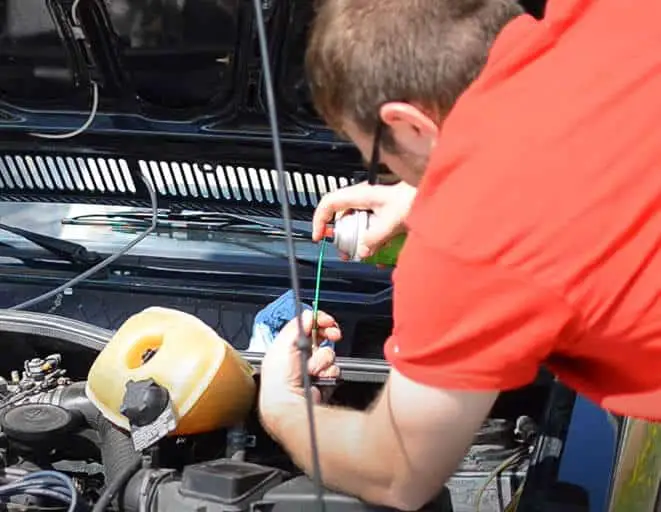Speedometer Cable Lube: Speedometer cables can irritate when you see the erratic gyrations from the speedometer’s needle. The problem appears severe and could lead one to believe that the engine could be the cause. The speedometer twisting cable usually causes the issue, or if the cable is no longer lubricated.
Like other cables, maintenance for the speedometer cable involves cleaning and lubrication. It is not as tricky as other components, such as the clutch and throttle cables. However, it is certainly delicate, as its role affects its design. Therefore its regular maintenance is crucial. Along with its layout and oiling, water infiltrates through the meter cable that needs special care.
How to Clean and Lubricate the Speedometer Cable (DIY)
#1: Cleaning of the Speedometer Cable

If you’re regularly keeping your vehicle outdoors or riding through rainy conditions, water may enter through the meter gear or nut that connects the main meter unit to the cable. In this instance, take into consideration that the forward fork’s stroke when the cable near the connection point with the meter gear is not above the meter gear then water stays within the cable’s outer layer and the inner cable that has been soaked with water gets rust.
Rusting this way is typical for vehicles that are on the road. However, models that ride off-road can be prone to splashing water on the wheel. It would help if you were wary of moisture present in the cables. It’s easy to determine and is evidence that rainwater is infiltrating the cable if there is a drip of rusty water or the inner cable has partly rusted when the meter cable is taken from the section of the meter gear. The rust on the inner cable can affect the cable’s flexibility and result in irregular rotation.
Once you have removed the cable’s outer cover, wash its interior using the parts cleaner. It is recommended to change the meter cable since it is easier to let moisture in when the cover on the outside of the cable is damaged due to rubbing with the body. After cleaning the exterior cable, blow it with the air compressor. It will eliminate the oil.
Suppose rust develops on the cable’s inside. In that case, it will also stick to the interior of the cable’s outer, and even if there’s no corrosion on the cable, the dirt from the friction is bonded to the area that the inner and the outer parts rub. First, take the external cable out of the meter. Remove the inner cable later.
The inner cable is typically easily removed from the meter gear’s side and the lower portion of the vehicle. However, O-rings, seals, oil, and washers could be positioned at the ends of the cable based on the model. So, take care when pulling out the cable to ensure that you don’t lose the components. Then, apply the cleaner inside the cable’s outer part to clean it. Suppose the red powder of rust appears with internal dirt. In that case, it is evident that the rust is stuck inside the cable, and we recommend changing the cable with a new one if you wish to continue riding your motorcycle for a lengthy duration.
Additionally, if the cleaner part remains in the cable, it will get removed. Blow it out using an air compressor once you have finished the cleaning.
#2: Lubricate the Speedometer Cable

The grease in the inner cable is beneficial to prevent rust. Set the new cable for your speedometer on a clean, dry surface to Lubricate the cable. You can place it on a large cardboard piece or even a plastic sheet. Be sure that the surface you choose to use is clean and free of dirt. Sand can damage the cable by creating a grooving or fraying. Apply a large amount of grease to the entire cable from one point to the next. Make back-and-forth strokes evenly across the cable surface, stopping approximately 3 inches at each point. Flip the cable around and ensure that the underside is covered. You require a thick to medium coat covering the entire length and no clumps or globs. After installation, many greases are pushed out of the cable housing, creating a mess.
Installing a new cable into an old housing requires some skill and patience. Reform any bends or twists within the cable housing using pressure. When the cable is brand new, it should not cause any difficulties. The cable is inserted at one end, and twist it around while you go. It will spread the grease around the interior of the cable housing. Stop if you meet resistance. If necessary, pull it out. Then feed it back and twist it around while you go. If it gets stuck, take it off and straighten the cable housing before trying again. When you are satisfied with the installation, remove grease from both ends.
Feed the cable through the holes for routing from the side of the dashboard and then into the transmission or gearbox housing. Attach it using the straps for retaining. Twist the end cap of the cable at both ends using channel locks. If you have a bolt-mounted gearbox and transmission cable connections, ensure the mount is tight to secure the cable’s end.
Also read: What to do if a Car Overheats?
Conclusion
Rust is the biggest enemy of the speedometer cable. Regular maintenance and lubrication will prolong the life of your speedometer cable.
